Object Pronouns In Arabic With Examples (Essential Guide)
Object pronouns in Arabic are used to indicate the direct or indirect object of a sentence. These pronouns are placed directly after the verb. In this lesson, we will learn Arabic object pronouns, how they are place, and examples.
Advertisements
Object Pronouns In Arabic
In Arabic, object pronouns are suffixes, they are typically attached to the end of the verb in a sentence, and they can take on different forms depending on the gender and number of the noun they are referring to.
The object pronouns in Arabic are:
- ـني (ni) for the first person singular (me)
- ـكَ (ka) for the second person singular masculine (you, singular, masculine)
- ـكِ (ki) for the second person singular feminine (you, singular, feminine)
- ـه (hu) for the third person singular masculine (him)
- ـها (ha) for the third person singular feminine (her)
- ـنا (nā) for the first person plural (us)
- ـكما (kuma) for the second person dual masculine or feminine, used for two people (you two, masculine or feminine)
- ـكم (kum) for the second person plural masculine (you, plural, masculine)
- ـكن (kunna) for the second person plural feminine (you, plural, feminine)
- ـهما (huma) for the third person dual masculine or feminine, used for two people (you two, masculine or feminine)
- ـهم (hum) for the third person plural masculine (them, masculine)
- ـهن (hunna) for the third person plural female gender (them, feminine)
The complete Arabic object pronouns are tabulated below:
| Arabic | Transliteration | English |
| ـني | -ni | me |
| ـكَ | -ka | you (masc.) |
| ـكِ | -ki | you (fem.) |
| ـه | -hu | him |
| ـها | -ha | her |
| Dual | ||
| ـنا | -na | us (two people) |
| ـكما | -kuma | you (two people) |
| ـهما | -huma | them (two people) |
| Plural | ||
| ـنا | -na | us |
| ـكم | -kum | you (masc.) |
| ـكن | -kunna | you (fem.) |
| ـهم | -hum | them (masc.) |
| ـهن | -hunna | them (fem.) |
RELATED READING Subject Pronouns in ARABIC With Examples (Essential Guide)
Advertisements
Object Pronouns Examples In Arabic
Here are some examples of object pronouns in Arabic.
- I saw him: رأيتُه (ra’aytu-hu)
- She gave it to us: أعطتُها لنا (a’tat-ha lanā)
- You (singular, masculine) called me: دعاني (da’ānī)
- They gave it to you (plural, feminine): أعطواها لكنّ (a’taw-hā lakinn)
One of the most commonly used object pronouns in Arabic is the pronoun “ه” (hu), which is used to refer to masculine singular nouns.
For example, if you wanted to say “I saw him,” you would say “رأيته” (ra’aytu-hu), where “ه” (hu) is attached to the end of the verb “رأيت” (ra’aytu) to indicate that the subject of the sentence is masculine and singular.
Another common object pronoun in Arabic is “ه” (ha), which is used to refer to feminine singular nouns.
For example, if you wanted to say “I saw her,” you would say “رأيتها” (ra’aytu-ha), where “ه” (ha) is attached to the end of the verb “رأيت” (ra’aytu) to indicate that the subject of the sentence is feminine and singular.
Advertisements
In addition to singular object pronouns, Arabic also has dual and plural object pronouns, which are used to refer to groups of nouns.
For example, if you wanted to say “I saw them,” you would say “رأيتهم” (ra’aytu-hum) if the group is masculine, or “رأيتهن” (ra’aytu-hunna) if the group is feminine.
It is important to note that the gender and number of the object pronoun must match the noun it is referring to in order for the sentence to be grammatically correct.
Advertisements

Singular
- He asked me سألني (sa’alni)
- He asked you (masc.) سألكَ (sa’alaka)
- He asked you (fem.) سألكِ (sa’alaki)
- He asked him سأله (sa’alahu)
- He asked her سألها (sa’alaha)
Dual
- He asked us سألنا (sa’alna)
- He asked you سألكما (sa’alkuma)
- He asked them سألهما (sa’alhuma)
Plural
- He asked us سألنا. (sa’alna)
- He asked you (masc.) سألكم (sa’alkum)
- He asked you (fem.) سألكن (sa’alkunna)
- He asked them (masc.) سألهم (sa’alhum)
- He asked them (fem.) سألهن (sa’alhunna)
More Examples
- يحبّك الله “Allah loves you” (m)
- يحبّكِ الله “Allah loves you” (f)
- يحبّنا الله Allah loves us”
- يحبّها الله “Allah loves her”
- أحبّك “I love you” (m)
- أحبّكِ “I love you” (f)
- أحبّنا “I love us”
- أحبّها “I love her”
Note: Even thought, the possesive Pronouns and objects pronouns are quite similar, there is a slight difference between them. The main difference is possesive Pronouns are attached to nouns while object pronouns are attached to verbs.
Conclusion
In conclusion, object pronouns are an important part of the Arabic language, and they are used to indicate the object of a sentence.
They can take on different forms depending on the gender and number of the noun they are referring to, and it is important to use the correct form in order to ensure that your sentences are grammatically correct.
It is important to note that in Arabic, the object pronouns are typically attached to the end of the verb, rather than placed before the verb as is common in English. In addition, the object pronouns in Arabic also change depending on the tense and mood of the verb.
By understanding the different forms and how they are used, you can improve your ability to speak and understand Arabic.
Advertisements

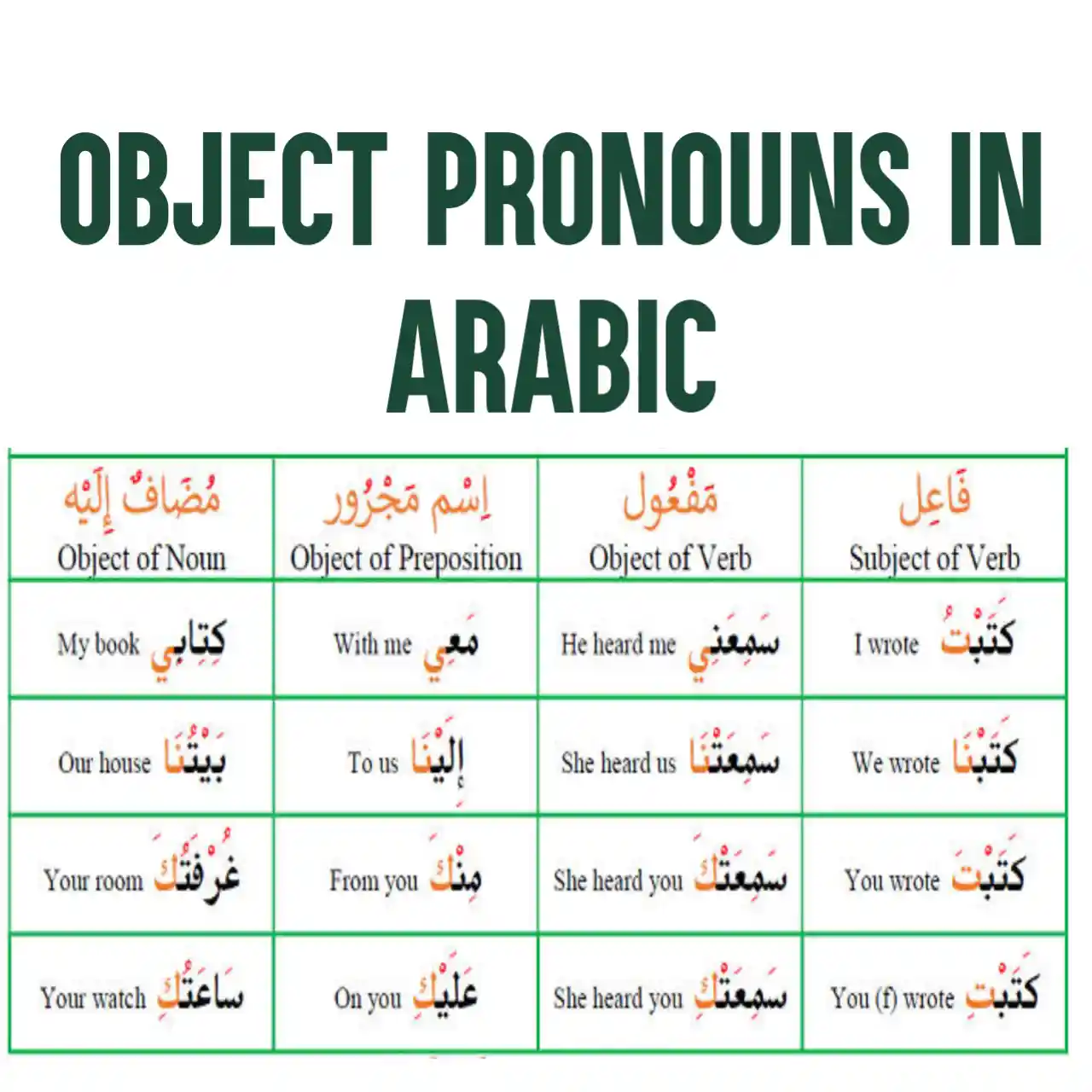
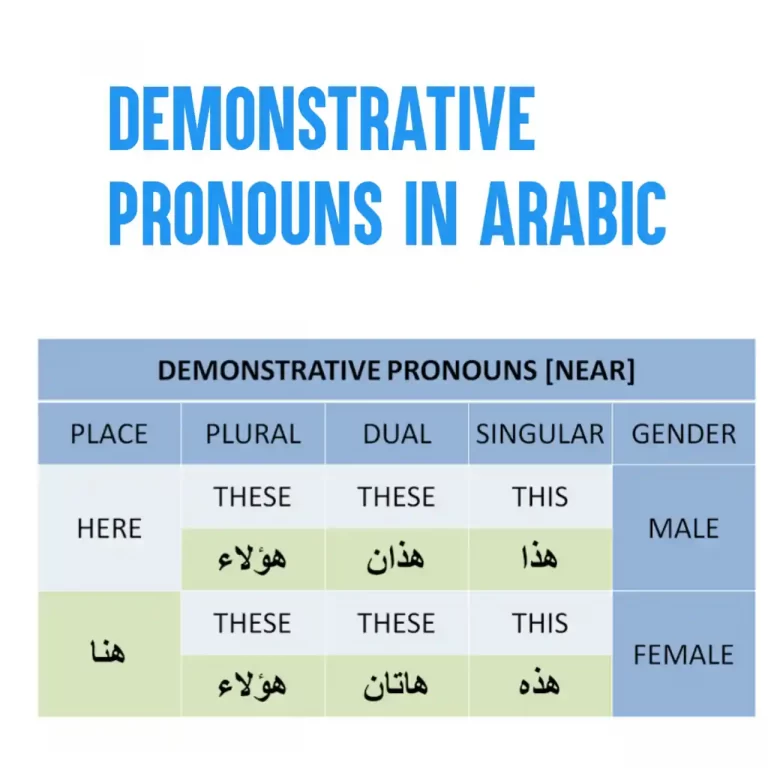
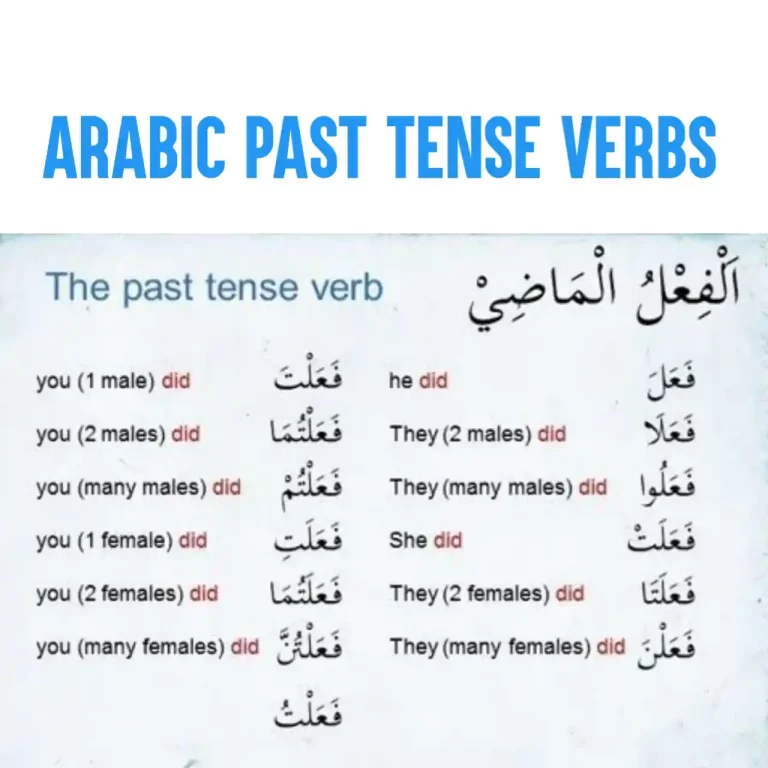
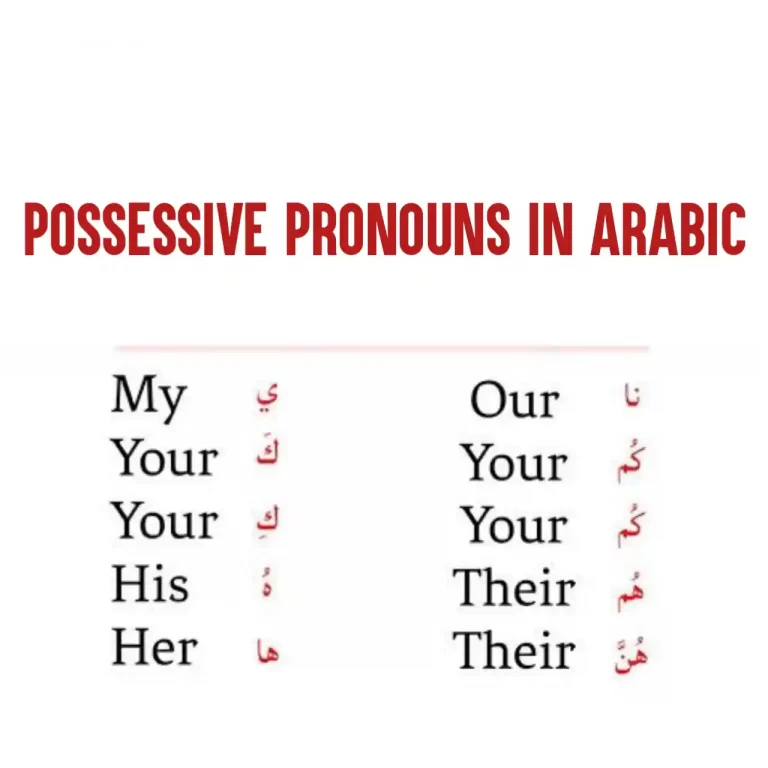
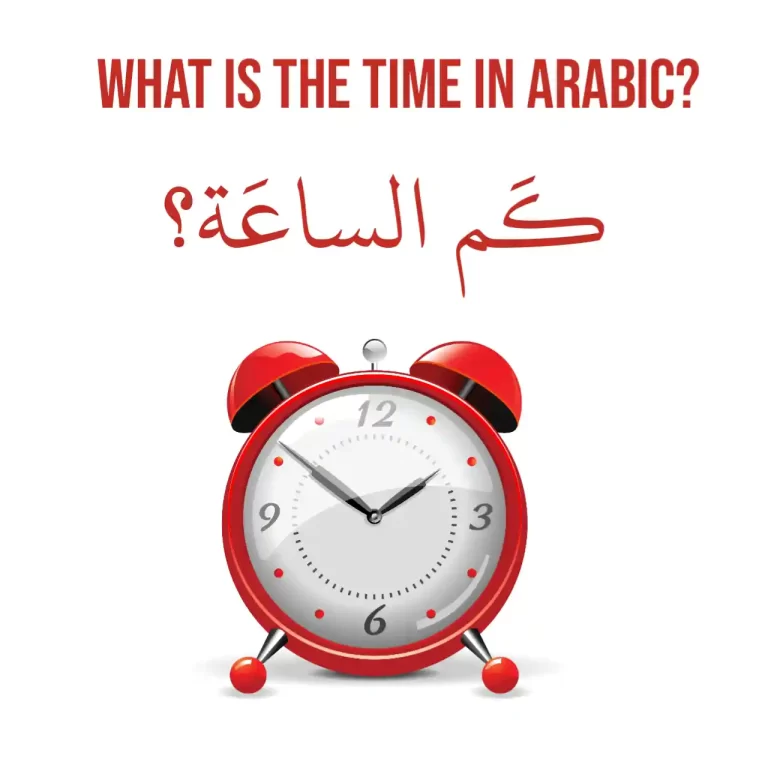


One Comment